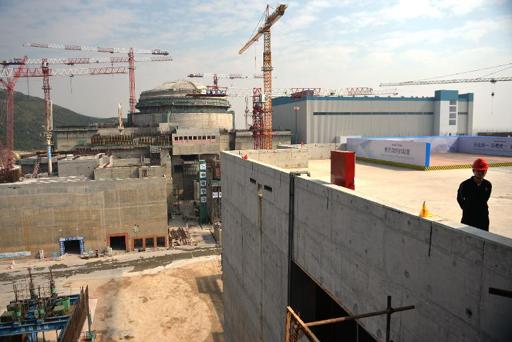Construction of China's first "third generation" nuclear reactor will start on Thursday, a state-run company said, as Beijing attempts to export its atomic energy designs globally.
Unit five of the Fuqing nuclear power plant in Fujian province will incorporate an ACP1000 reactor developed by the China National Nuclear Corporation (CNNC), the firm said Wednesday.
The ACP1000 is one of a "third generation" of reactors designed to extract more energy from a given amount of uranium fuel than previous technologies, and in a safer way.
Other third-generation reactors are under construction elsewhere, with competing designs by French group Areva, Westinghouse of the US, and South Korea's Kepco, among others.
CNNC touts its reactor as "a production of independent innovation", although industry reports say it is related to a French design imported to China in the 1990s.
"This project is also very important for our nuclear going-global strategy," CNCC's general manager Qian Zhimin told reporters.
Mainland China has 26 nuclear power reactors in operation, 23 being built, and more about to start construction, according to the World Nuclear Association.
"China’s policy is to ‘go global’ with exporting nuclear technology including heavy components in the supply chain," it adds on its website.
CNNC said an ACP1000 has been exported to Pakistan, and a deal was signed in February for a sale to Argentina.
Qian said CNNC was in negotiations to sell ACP1000 technology to more than 20 countries, but did not provide details.
Beijing suspended approvals of new plants following a series of meltdowns at Japan's Fukushima nuclear power plant in March 2011 after a tsunami struck.
But it resumed approvals in 2012, despite a warning the same year from the environmental ministry that the country's nuclear safety situation was "not optimistic".
Nuclear power is a key element of China's attempts to tackle its chronic pollution, with the use of coal for energy blamed as a major cause of the problem.




















































